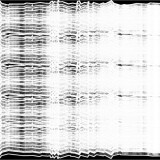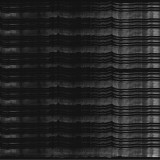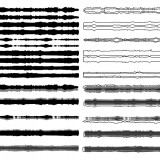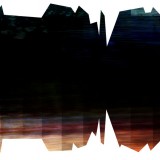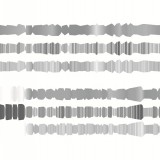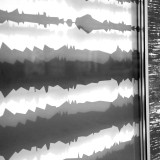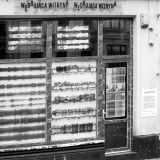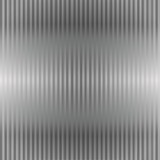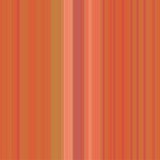Maciej H. Zdanowicz
Maciej Zdanowicz (b. 1982) – is an artist focusing upon painting, drawing, computer graphics, sound art and space actions. In 2007 he graduated with honours from the Academy of Fine Arts in £ód¼ where he is currently an assistant professor in the Drawing and Painting Studio (Department of Visual Arts). He connects his curatorial and academic work with artistic activity – he is working on an art history doctorate at the Polish Academy of Science in Warsaw and is also working in painting – within the Institute of Fine Arts at the Jan Kochanowski University in Kielce. He organises conferences and symposia and is a member of the Center for Visual Music in Los Angeles, the Polish Society for Electroacoustic Music and the International Print Triennal Society in Krakow. He co-operates with the Art and Documentation Association and is currently living in Koluszki.
He is mainly artistically interested in the area of sensual synergy and synaesthesia, including the visual representation of music and research into the new possibilities for visual transcripts of sounds plus a reflection upon acoustic space and acoustic ecology. He writes about himself in the following way: I am a man on the border of art and science, visual art and music. My activity is both theoretical and artistic. I believe that there are no borders between art and all other domains of human activity as any so-called borders are inseparable and translatable.
Since 2009 he has created a series called Luminaria – the name of the series recalls ephemeral sculptures – architectural structures based upon the play of light and colour. Zdanowicz’s works are black and white. The play of vibrating lines which creates an illusion of three-dimensionality brings to mind op-art. The artist places these works onto elements of architecture and this way interferes with the existing spatial relationships. One of his projects of this type took place in an interior space of the abandoned Holy Mary Cathedral in Lubi±¿ close to Wroc³aw. It was accompanied by the crystal clear sound of flowing, dripping water (a quotation from the soundtrack of the movie by Andriej Tarkowski “The Mirror”). The project was devised as part of the SlotArt Festival in 2009.
In a work entitled Monophonic Images two types of graphics appear. The first one resembles a graphic record of soundtracks, for example as in winamp software and the artist places one or a few such graphic record onto the plane surface of a painting. Here he also operates in black, white and grayscale (the term monophonic images refer to music pieces based on the sound of one instrument and at the same time to modulation narrowed to a play on tones and the scale of elements). In compositions of the second type he focuses only on the tonal nuances within the frame of the recording of a concrete soundtrack. Art history documents many attempts of tying visual art with music, for example the paintings of Vasily Kandinsky, Paul Klee or maybe the closest to Zdanowicz’s way of thinking – the works by Antoni Starczewski who also came from £ód¼ milieu. Starczewski used rhythm in his visual compositions. As with both artists there is no space for improvisation – visual structures are created according to a certain method. Starczewski recorded the sounds of a violin which was intentionally out of tune. In this way his first Letresons (letter-sounds) emerged, which were the effect of attempts to translate sculptural and graphic sets into sound. In Zdanowicz’s paintings, concrete sounds correspond with concrete graphic elements – lines of various thickness and tones. Their form also brings associations with geometric abstraction, but is created in close relationship with the sound recording. In Polyphonic Images he creates compositions resulting from the consonance of a few instruments and their melodic paths. This way, by analogy, he broadens the greyscale with colour, ascribing a concrete meaning to it – the sound of a given instrument.
His inspiration is contemporary classical music, in particular avant-garde music from the second half of the twentieth century (sonorism, serialism and minimal music). In some works he analyses the acoustics of certain music pieces. He does not reveal the titles or names of the composers. The artist’s intention is to evoke within the receiver a quasi-auditory experience, exposing him/her to the experience of a certain kind of energy (kinaesthesia) and to create an abstract object which functions on the border between image and music.
Zdanowicz’s following series are his works entitled Soundscape – sound landscapes. The term was devised by R. Murray Schafer, a Canadian composer and musicologist. It means the consonance of sounds in a given time and space. Soundscapes are created out of the sounds of the surrounding reality – coming from both the natural environment and the artificial environment as a result of human activity – such as speech, work and footsteps. One may distinguish amongst others: sound keys – uniform sound masses, which are often a background for other sounds, sound signals – which come to the fore and are clear, recognisable acoustic messages and soundmarks – sounds which are unique and exceptional because of their source or meaning.
In 2013 Zdanowicz made Soundscape I at the intersection of Zielona and Piotrkowska St. in £ód¼. In May and June he registered sounds in the area and made a photo documentation. The artist analysed: all kinds of hums generated by metropolis, noises resulting from the intensity of certain processes and phenomena, which are necessary and inevitable from the point of view of present times. The sounds of individual people, conversations, sounds of Turkish music from the food shops in the area, clattering of heels against the pavement, all melted into one mass along with the noise of cars passing by, the city transit and mechanical constructions. The intensity of these aural sensations was strengthened by the weather conditions (rain and high humidity), the surrounding stone, concrete, monumental facades and the arcades of buildings. With reference to one’s own associations and feelings based on certain sensual synergy and by using computer analysis of sound spectrum, I created images which are my response to existing circumstances. As a result, images emerged in which visual equivalents of registered sounds were contrasted with photographic images of the space, overlapping to the point that they were blurred. The artist again limited his means to greyscale, whose intensity matched the fluctuation of the frequency and intensity of sounds. The Soundscape I project was a site-specific presentation and could be seen in the window at number 54 Piotrkowska St. as one of the exhibitions as part of an initiative entitled “Travelling Display Window”. This work of art inspired by the city sounds brings to mind the Futurist Manifesto of Luigi Russolo The Art of Noises and bruitism which emerged from that ground.
Maciej Zdanowicz works with intermedia. He turns sound elements into their visual equivalents, as paintings and computer graphics. His most recent works indicate that for the artist the question of the spatiality of visual and sound spheres deepened by his registration of urban life, is becoming more and more important.
tags: painting, computer graphics, installation art., audio art
Anka Le¶niak


